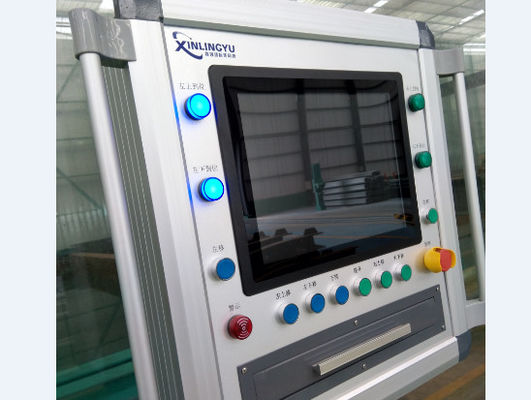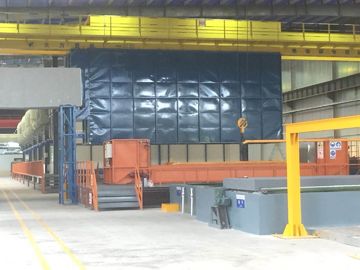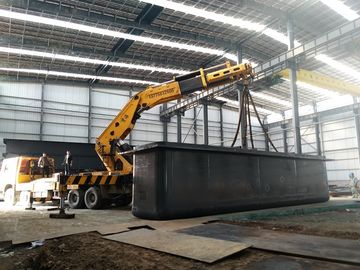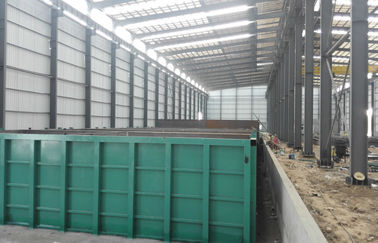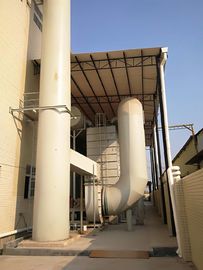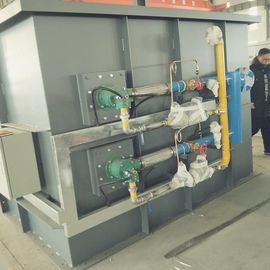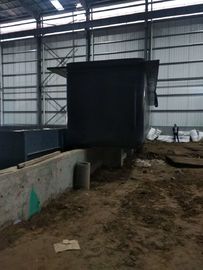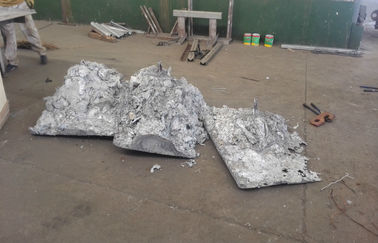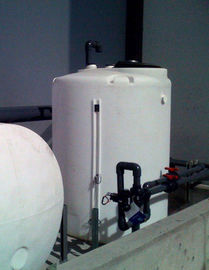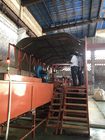How to Choose Hot Dip Galvanizing Equipment: A Comprehensive Guide
Hot dip galvanizing is a widely used method for protecting steel and iron from corrosion by coating them with a layer of zinc. The process involves immersing the metal in a molten zinc bath, which forms a strong, durable protective layer. As demand for corrosion-resistant materials increases, it’s crucial to choose the right hot dip galvanizing equipment to ensure efficiency, product quality, and safety.
Here’s a guide to help you choose the best hot dip galvanizing equipment for your needs.
1. Understand the Process and Your Requirements
Before you dive into selecting equipment, it’s important to understand the hot dip galvanizing process and your specific requirements.
-
Size and Type of Workpieces: The size and shape of the steel or iron products you are galvanizing will dictate the equipment needed. Larger products or those with intricate shapes may require specialized equipment, such as longer dipping tanks or custom fixtures.
-
Production Volume: High-volume production requires equipment that can operate efficiently and quickly, while smaller-scale operations might prioritize flexibility or specialized treatments.
-
Quality Requirements: Different products may have varying surface finish or corrosion resistance standards. Ensure the equipment you choose is capable of meeting these specific requirements.
2. Key Equipment for Hot Dip Galvanizing
-
Zinc Bath Tank: The heart of the hot dip galvanizing process, the zinc bath tank, holds molten zinc at temperatures of around 450°C (842°F). When selecting a tank, consider:
-
Tank Size: The dimensions of the tank should accommodate the largest item you plan to galvanize.
-
Tank Materials: The tank must be made from corrosion-resistant materials to withstand the high temperatures and the corrosive nature of molten zinc.
-
Temperature Control: Precise temperature control is essential for consistent coating thickness and quality. Automatic temperature regulators or sensors should be part of the system.
-
Pre-Treatment Equipment: The surface of the workpieces must be cleaned and prepared before dipping in the zinc bath. Pre-treatment equipment usually involves:
-
Pickling Tanks: To remove rust and mill scale from the metal surface using an acid solution (typically hydrochloric or sulfuric acid).
-
Fluxing Tanks: To apply a flux (usually zinc ammonium chloride solution) that prevents oxidation before dipping the metal into the zinc bath.
-
Post-Treatment Equipment: After the galvanizing process, the workpieces should be cooled, dried, or passivated to improve the quality of the zinc coating.
-
Cooling Tanks or Air Dryers: These help cool down the metal after it’s dipped in molten zinc.
-
Passivation Systems: Optional, but useful for further enhancing corrosion resistance by applying a protective layer after galvanizing.
-
Crane and Hoist Systems: Lifting and handling large or heavy workpieces is essential. You may need specialized cranes, hoists, or automated systems to move the items in and out of the galvanizing bath safely.
3. Automation and Control Systems
Automating the hot dip galvanizing process can significantly increase efficiency, reduce labor costs, and enhance precision. The automation level required will depend on the complexity and scale of your operation.
-
Programmable Logic Controllers (PLCs): A PLC is often used to control the entire galvanizing process, including temperature regulation, dipping times, and movement of workpieces.
-
Sensors and Monitors: Incorporating sensors for temperature, zinc levels, and workpiece handling can help maintain consistent quality and reduce human error.
-
Robotic Systems: For large-scale operations, robots can be employed to handle workpieces, ensuring high-speed, precision, and safe operations, reducing downtime and manual labor.
4. Safety Considerations
Safety should be a priority in any hot dip galvanizing operation. The equipment you choose should come with robust safety features, including:
-
Emergency Shutdown Systems: For quick response in case of an accident or system failure.
-
Ventilation Systems: Hot dip galvanizing involves the use of high temperatures and potentially hazardous fumes. Proper ventilation systems will ensure worker safety and compliance with regulations.
-
Protective Barriers and Controls: Equipment should include barriers to prevent accidental contact with molten zinc and safety interlocks for handling hot materials.
5. Durability and Maintenance
Given the harsh environment in which hot dip galvanizing equipment operates, selecting durable equipment is key. Look for equipment made from corrosion-resistant materials, especially in areas exposed to high temperatures and chemicals.
-
Material Quality: Stainless steel, high-temperature alloys, or special coatings can extend the lifespan of key equipment components like tanks, pipes, and nozzles.
-
Ease of Maintenance: Opt for equipment that’s easy to maintain and repair. Routine checks, like cleaning filters and replacing worn-out parts, should be straightforward to minimize downtime.
6. Energy Efficiency
Hot dip galvanizing can be energy-intensive due to the high temperatures required for zinc melting. Choosing energy-efficient equipment can help reduce operating costs.
-
Energy Recovery Systems: Some systems are designed to recover heat or energy from the process, helping to reduce fuel consumption.
-
Insulation: High-quality thermal insulation in tanks, pipes, and furnaces reduces heat loss, ensuring that the operation remains cost-effective.
7. Supplier Reputation and Support Services
When purchasing hot dip galvanizing equipment, choose a reputable supplier with a track record of providing high-quality machines and reliable support. Consider the following:
-
Installation and Training: Ensure the supplier offers installation and operator training to ensure the equipment is used properly and safely from the start.
-
Spare Parts and Service: It’s essential that the supplier provides easy access to spare parts and reliable maintenance services to minimize downtime.
-
Warranty and Support: A solid warranty and ongoing technical support can protect your investment.
8. Cost vs. Benefit
Finally, consider the total cost of ownership. While cheaper equipment may seem appealing upfront, it might come with higher maintenance costs, lower durability, or energy inefficiency in the long run. Evaluate the cost of the equipment in relation to its efficiency, lifespan, and potential for increased production capacity.
Conclusion
Choosing the right hot dip galvanizing equipment is a critical decision that impacts both the quality of your finished products and the overall efficiency of your operation. By considering factors such as production volume, equipment features, automation, safety, and energy efficiency, you can make an informed choice that maximizes profitability and minimizes downtime.
Take the time to thoroughly evaluate your specific needs and consult with experts to find the best solution for your hot dip galvanizing process.

 Your message must be between 20-3,000 characters!
Your message must be between 20-3,000 characters! Please check your E-mail!
Please check your E-mail!  Your message must be between 20-3,000 characters!
Your message must be between 20-3,000 characters! Please check your E-mail!
Please check your E-mail! 
